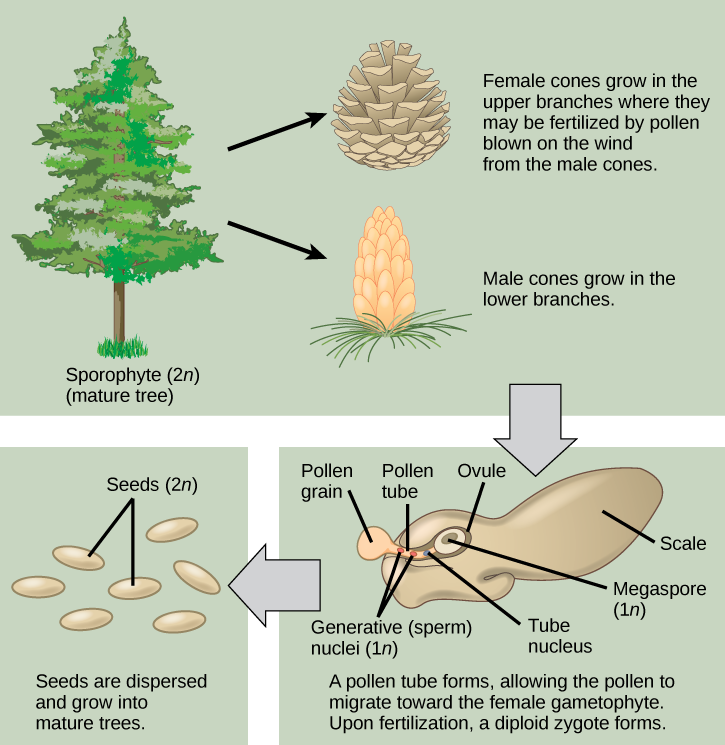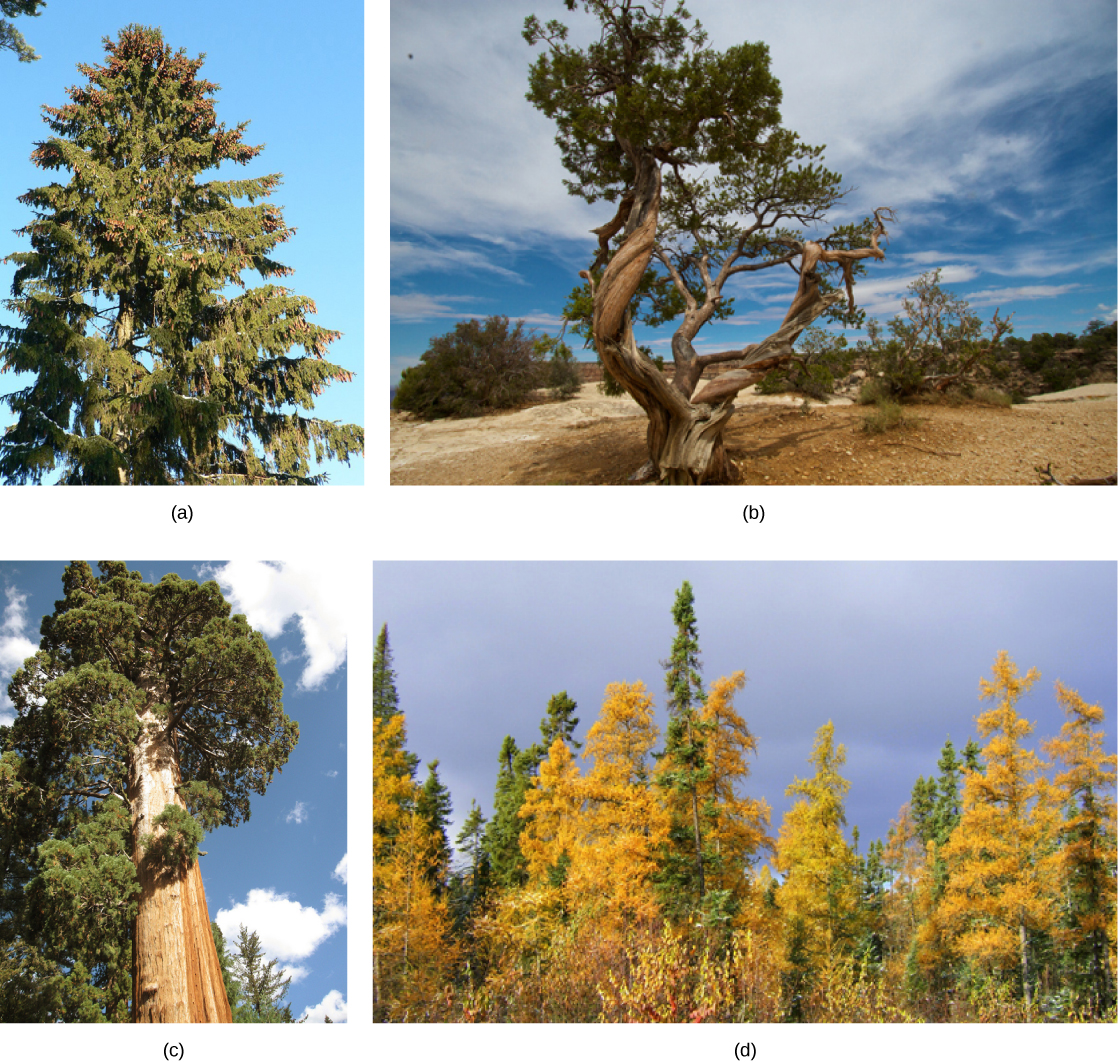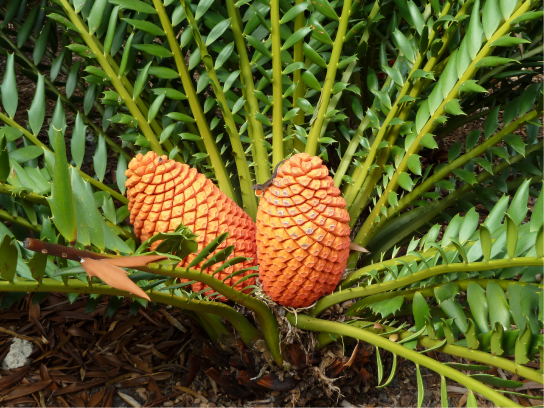| << Chapter < Page | Chapter >> Page > |

At what stage does the diploid zygote form?
Watch this video to see the process of seed production in gymnosperms.
Modern gymnosperms are classified into four phyla. Coniferophyta, Cycadophyta, and Ginkgophyta are similar in their production of secondary cambium (cells that generate the vascular system of the trunk or stem and are partially specialized for water transportation) and their pattern of seed development. However, the three phyla are not closely related phylogenetically to each other. Gnetophyta are considered the closest group to angiosperms because they produce true xylem tissue.
Conifers are the dominant phylum of gymnosperms, with the most variety of species ( [link] ). Most are typically tall trees that usually bear scale-like or needle-like leaves. Water evaporation from leaves is reduced by their thin shape and the thick cuticle. Snow slides easily off needle-shaped leaves, keeping the load light and decreasing breaking of branches. Adaptations to cold and dry weather explain the predominance of conifers at high altitudes and in cold climates. Conifers include familiar evergreen trees such as pines, spruces, firs, cedars, sequoias, and yews. A few species are deciduous and lose their leaves in fall. The European larch and the tamarack are examples of deciduous conifers ( [link] c ). Many coniferous trees are harvested for paper pulp and timber. The wood of conifers is more primitive than the wood of angiosperms; it contains tracheids, but no vessel elements, and is therefore referred to as “soft wood.”

Cycads thrive in mild climates, and are often mistaken for palms because of the shape of their large, compound leaves. Cycads bear large cones ( [link] ), and may be pollinated by beetles rather than wind: unusual for a gymnosperm. They dominated the landscape during the age of dinosaurs in the Mesozoic, but only a hundred or so species persisted to modern times. They face possible extinction, and several species are protected through international conventions. Because of their attractive shape, they are often used as ornamental plants in gardens in the tropics and subtropics.


Notification Switch
Would you like to follow the 'Bi 101 for lbcc ilearn campus' conversation and receive update notifications?